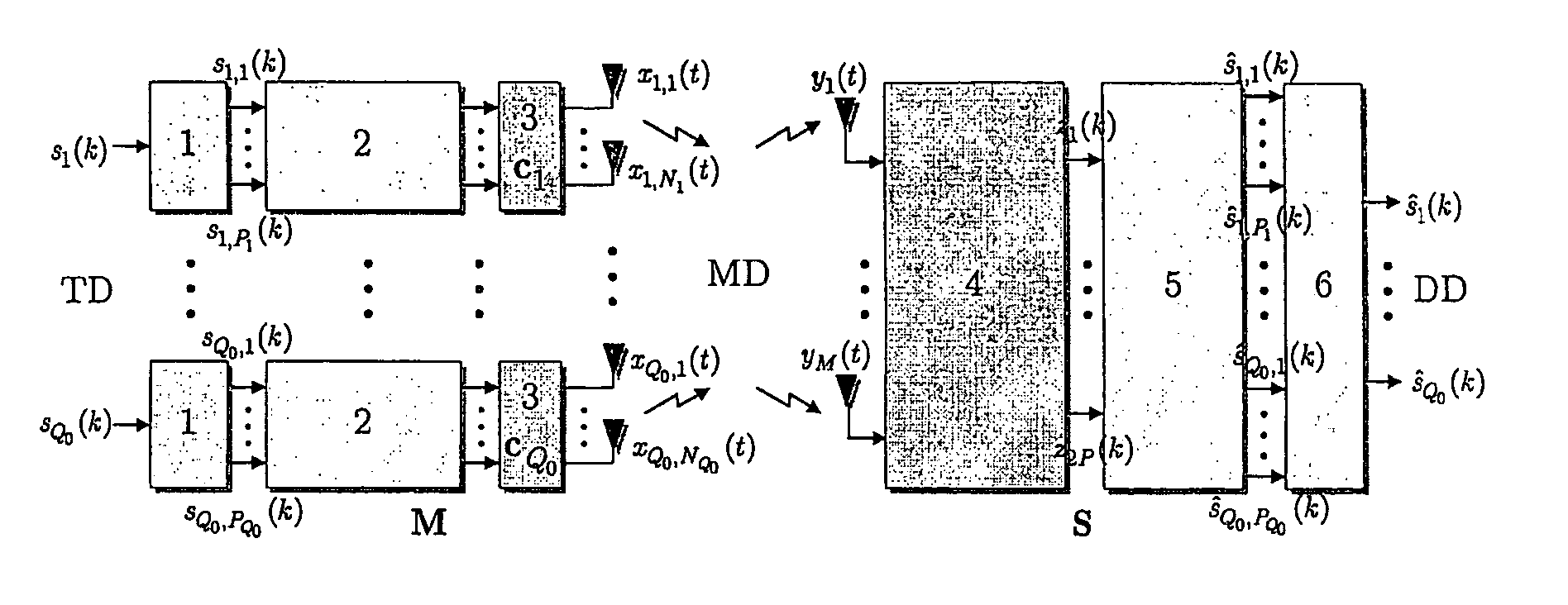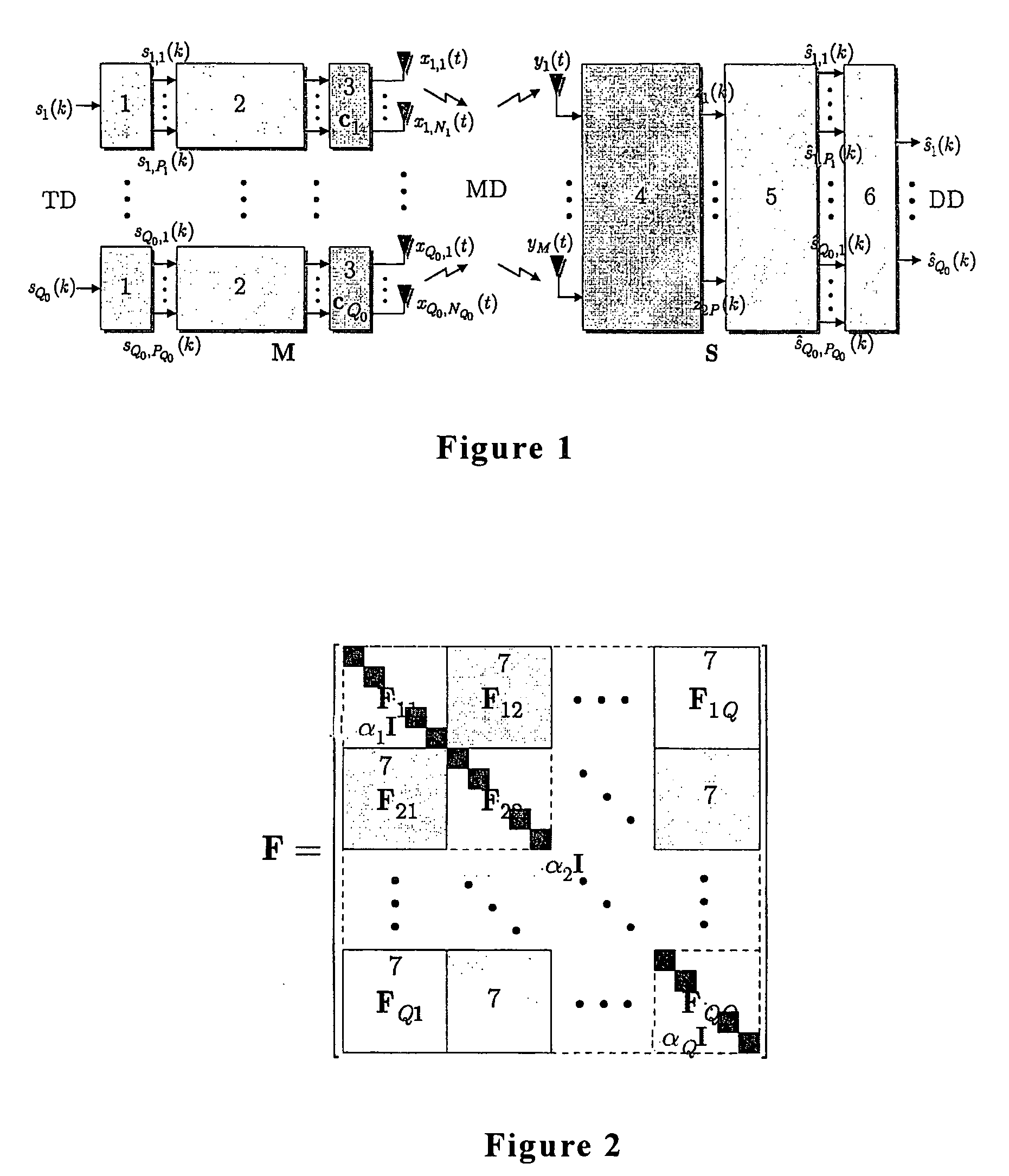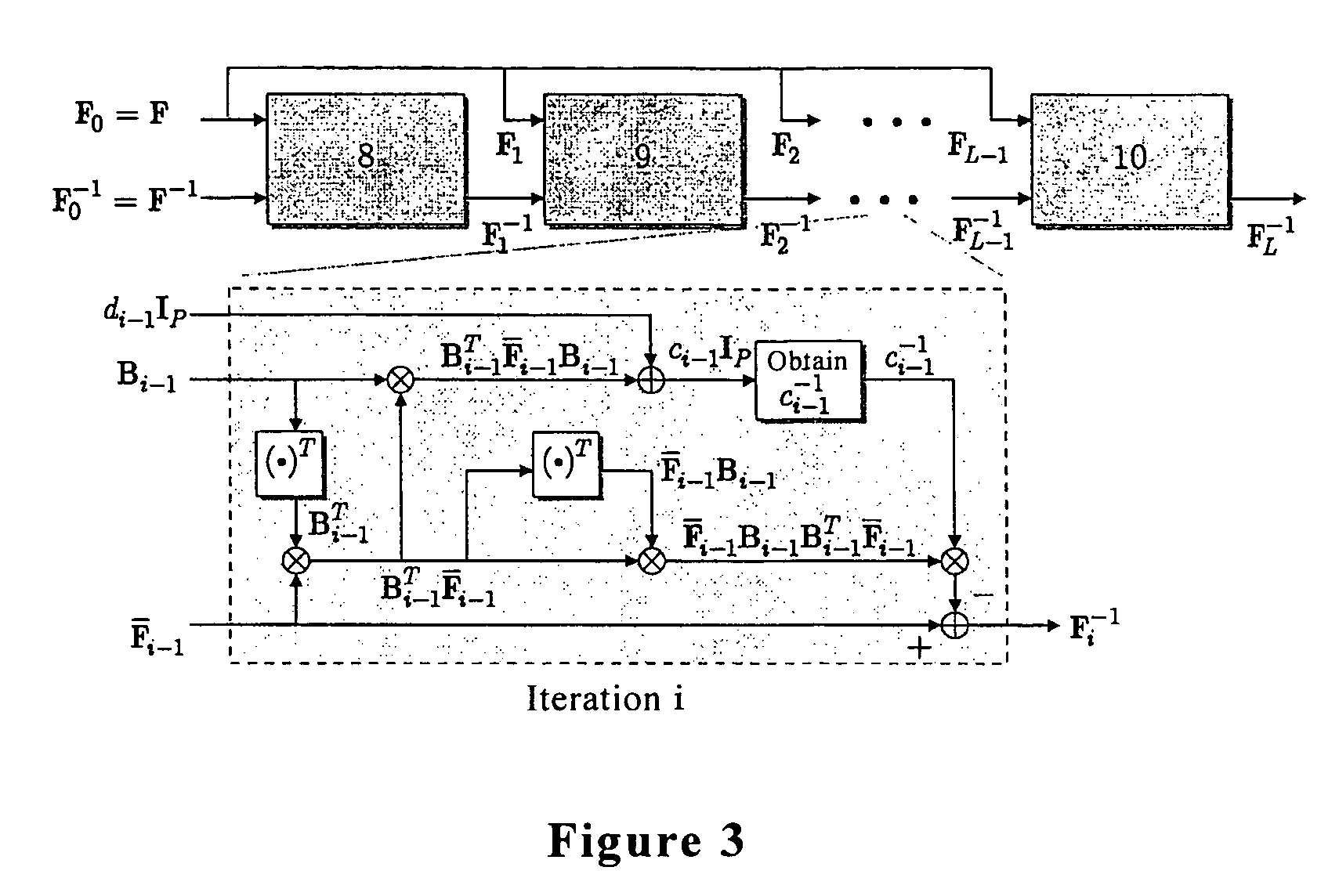Method of symbol detection for MIMO dual-signaling uplink CDMA systems
a dual-signal uplink and symbol detection technology, applied in the field of communication systems, can solve the problems of system not being able to obtain the system cannot achieve the maximum performance, and the process of pic signal detection cannot achieve the gradual increase of the receive diversity gain, so as to achieve high performance, increase the spectral efficiency, and the effect of diversity gain
- Summary
- Abstract
- Description
- Claims
- Application Information
AI Technical Summary
Benefits of technology
Problems solved by technology
Method used
Image
Examples
Embodiment Construction
[0034] A preferred embodiment of this invention is to be described as the following:
I. System Modeling
[0035] A. System Descriptions and Basic Assumptions
[0036] Consider an MIMO uplink CDMA system over the frequency-selective multi-path attenuation channels, as shown in FIG. 1, in which each of Q user terminals is allocated with N transmission antennas. The data stream of the qth user sq(k)′ where 1≦q≦Q′ can be transmitted by using spatial multiplexing (SM), or space time block coding (STBC). Suppose SD and SM represent the set of the user terminals which use STBC and SM respectively, and QD:=|SD| and QM:=|SM| represent the corresponding number of users. Based on the proposal in the article of [V. Tarokh, H. Jafarkhani, and A. R. Calderbank, “Space-time block codes from orthogonal designs,”IEEE Trans. Inform. Theory, vol. 45, no. 7, pp. 1456-1467, July 1999], for consecutive p symbols in the data stream of each STBC terminal, they are two-dimensionally coded by the space (N anten...
PUM
 Login to View More
Login to View More Abstract
Description
Claims
Application Information
 Login to View More
Login to View More - R&D
- Intellectual Property
- Life Sciences
- Materials
- Tech Scout
- Unparalleled Data Quality
- Higher Quality Content
- 60% Fewer Hallucinations
Browse by: Latest US Patents, China's latest patents, Technical Efficacy Thesaurus, Application Domain, Technology Topic, Popular Technical Reports.
© 2025 PatSnap. All rights reserved.Legal|Privacy policy|Modern Slavery Act Transparency Statement|Sitemap|About US| Contact US: help@patsnap.com



